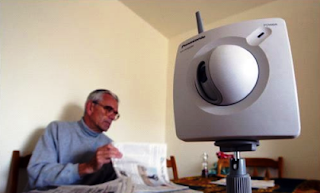Back in 2011, U.S. District Judge George King sentenced Luis Mijangos, 32, of Santa Ana, California to six years in prison for infiltrating computers belonging to women and teenage girls where he found sexually explicit photos and threatening to put them online unless they provided him with more.
Judge King called the crimes a form of cyber-terrorism and warned other hackers they will meet stiff penalties for ruining people's lives.
Authorities said Mijangos sent malicious software disguised as popular songs or videos to his victims' computers that also were unwittingly sent by women and teenage girls to their friends and family. In all, Mijangos unlawfully accessed and could control more than 100 computers.
He read their emails, watched them through webcams without their knowledge and most damaging was his discovery of nude photos they had taken of themselves. Mijangos then threatened to post the images online unless his victims were willing to provide more racy photos or videos to him or if they went to police, according to court documents. He also posed as some of the victims' boyfriends to convince them to send him nude pictures.
The question now is, how can you protect yourself from this form of hacking? Here are a few things you can do to minimize the odds of it happening.
Judge King called the crimes a form of cyber-terrorism and warned other hackers they will meet stiff penalties for ruining people's lives.
Authorities said Mijangos sent malicious software disguised as popular songs or videos to his victims' computers that also were unwittingly sent by women and teenage girls to their friends and family. In all, Mijangos unlawfully accessed and could control more than 100 computers.
He read their emails, watched them through webcams without their knowledge and most damaging was his discovery of nude photos they had taken of themselves. Mijangos then threatened to post the images online unless his victims were willing to provide more racy photos or videos to him or if they went to police, according to court documents. He also posed as some of the victims' boyfriends to convince them to send him nude pictures.
The question now is, how can you protect yourself from this form of hacking? Here are a few things you can do to minimize the odds of it happening.
- If you’re using an external webcam – one that plugs into your computer’s USB port – only connect it when you need it. Yes, it can be a pain to remember to plug it in whenever you want to Skype or Facetime with someone, but at least you’ll know 100 percent you aren’t been spied on if there’s no camera connected.
- Some external cameras have a small cover you can close over the webcam lens, so be sure you take advantage of this when you’re not using it. If your webcam doesn’t have this, you can point it to the ceiling until you need it, or place a piece of electrical tape on the front of the webcam – but don’t place it directly over the lens or else it could damage it.
- If your laptop or desktop has a built-in webcam, be sure to have good computer security software installed -- which you should have anyway. A good security suite includes antivirus, anti-spyware, a firewall and other tools to keep the bad guys out. Good web browsers like Internet Explorer should also notify you if your webcam is being activated and you may be prompted to agree. On a related note, many video chatting websites, like Chatroulette, will warn you it’s about to enable your webcam (e.g. “Press Start to enable your webcam and mic”).
- If you need to have your computer repaired, take it to a trustworthy source or else they could secretly install spying software; ensure remote access programs aren’t on your PC you didn’t install yourself, such as LogMeIn, Splashtop, TeamViewer, and so on. If you find something, immediately uninstall it and bring it to a trusted source, such as a tech-savvy relative or a professional.
- Be sure your wireless network has strong security settings and a good password to prevent outsiders from accessing your Wi-Fi network without your consent.
- Another tip is to go to the webcam’s setting and enable some kind of notification when it’s being used, such as a small light that turns on near the webcam or a sound alert.


No comments:
Post a Comment